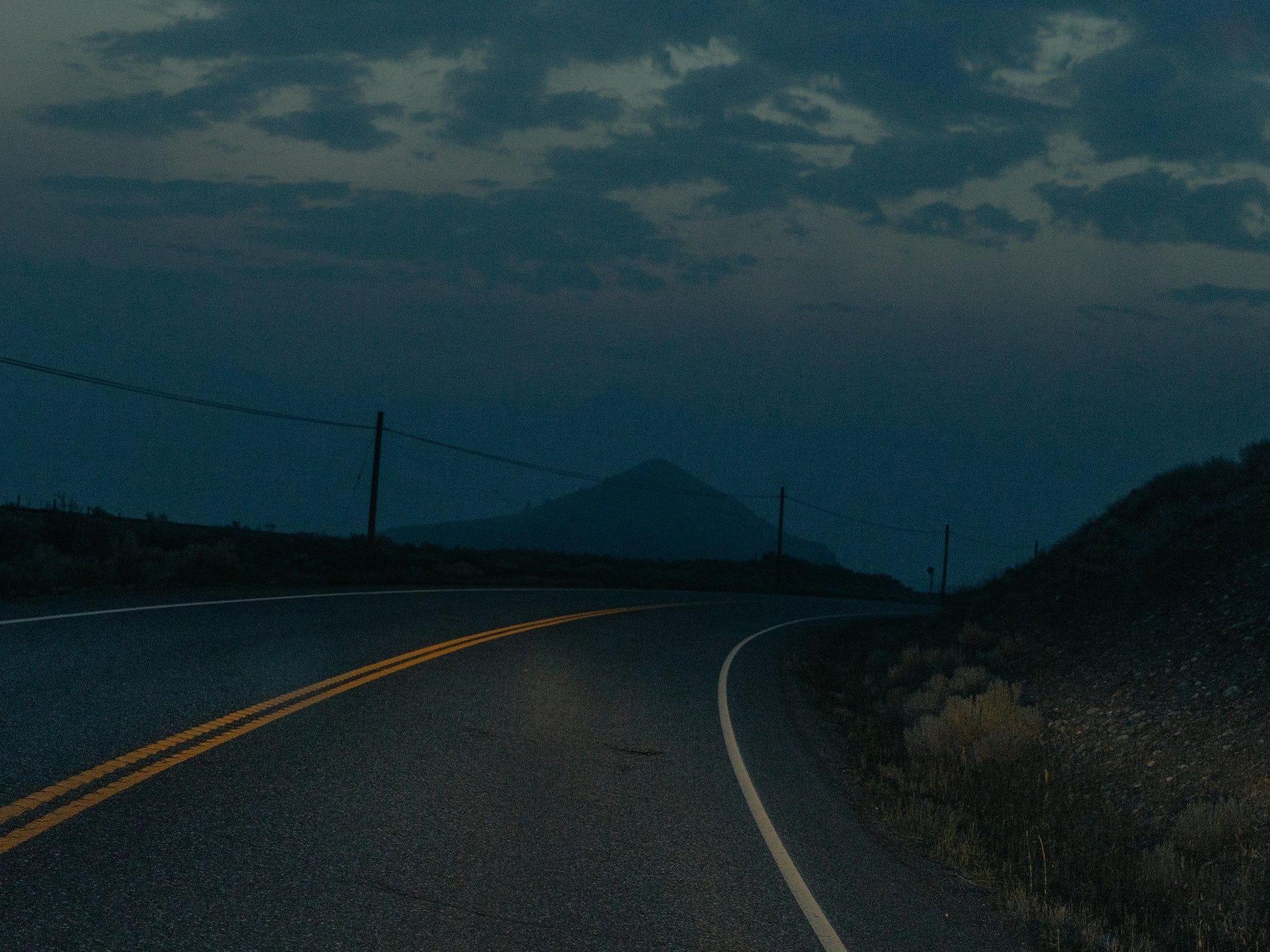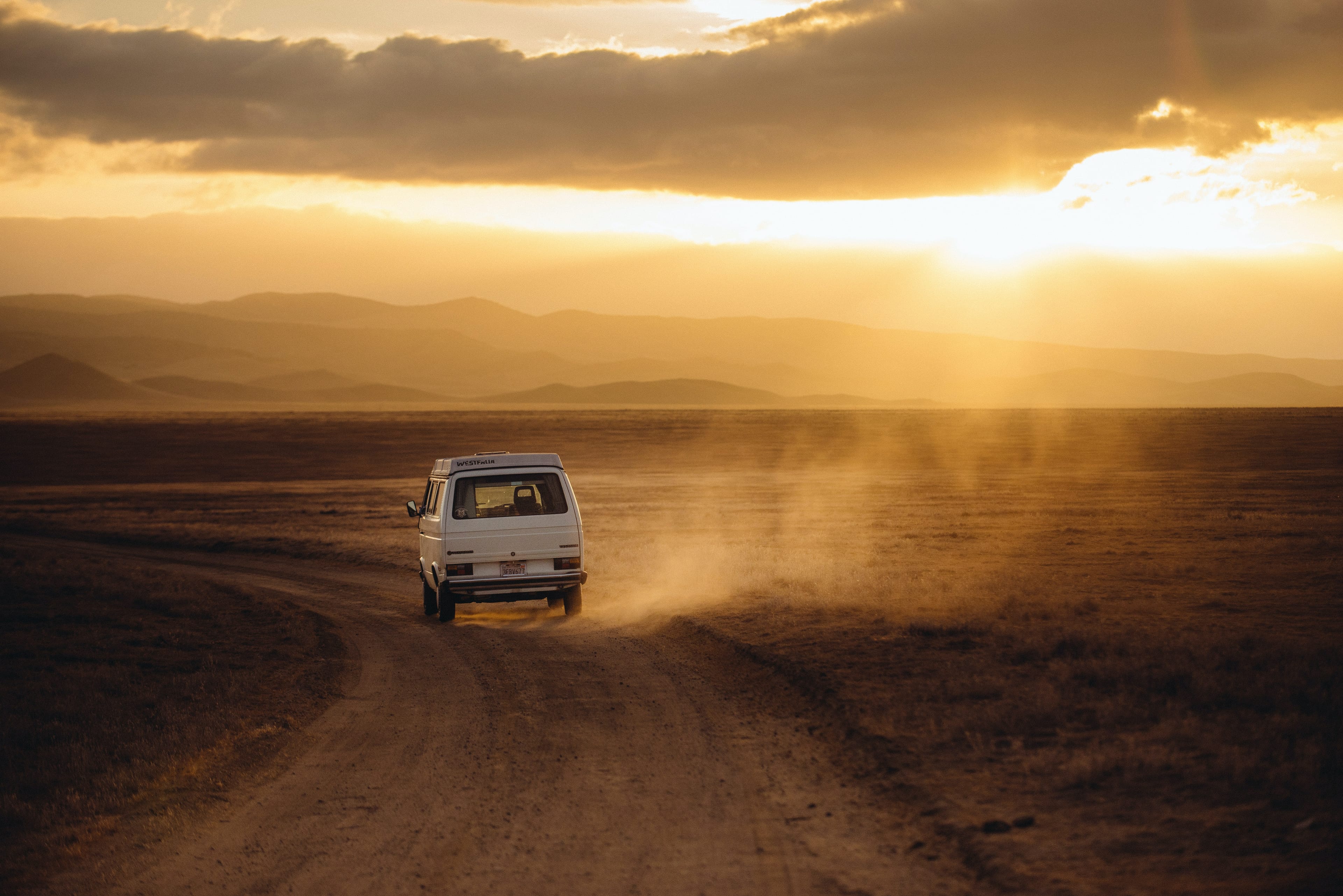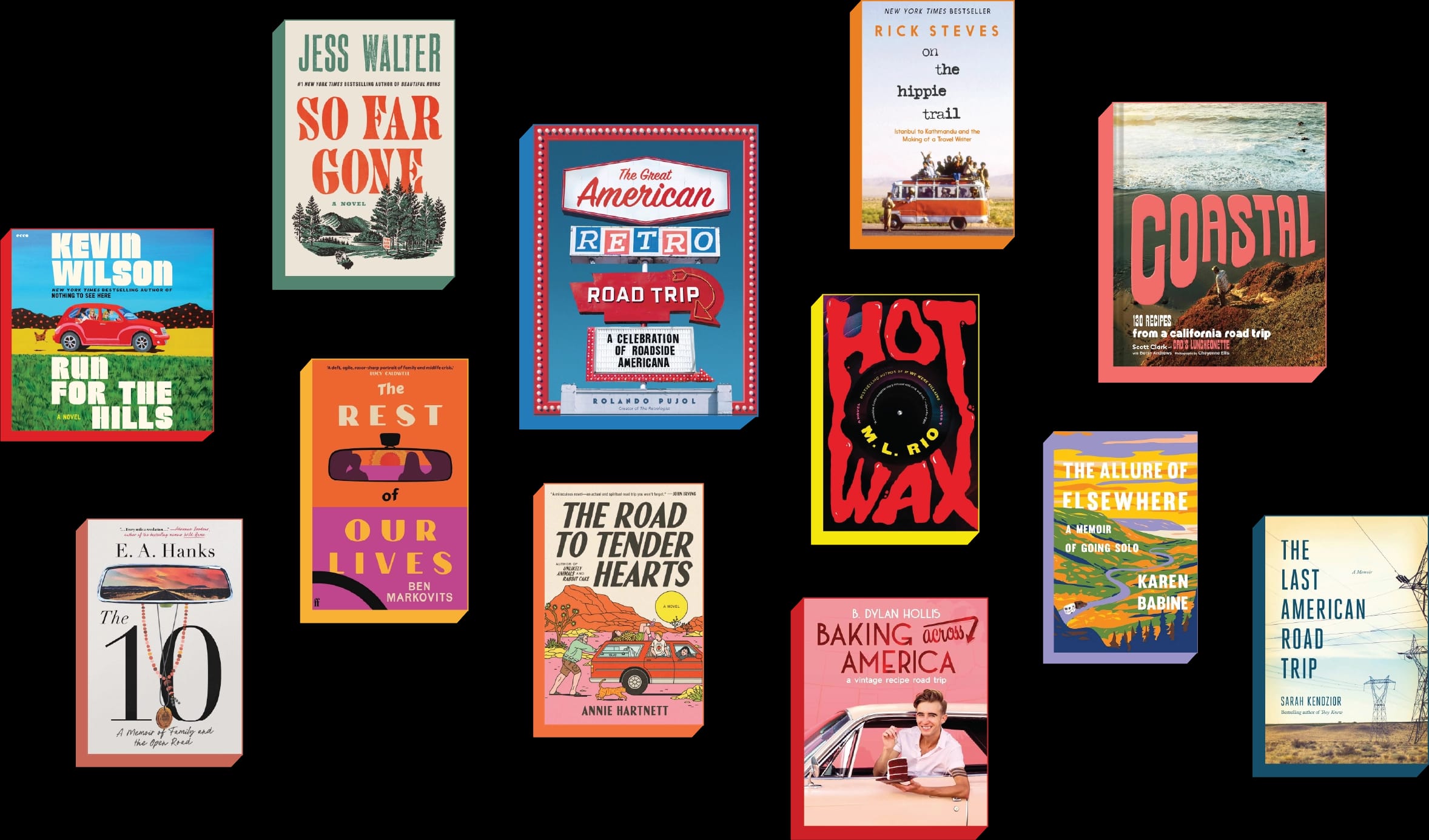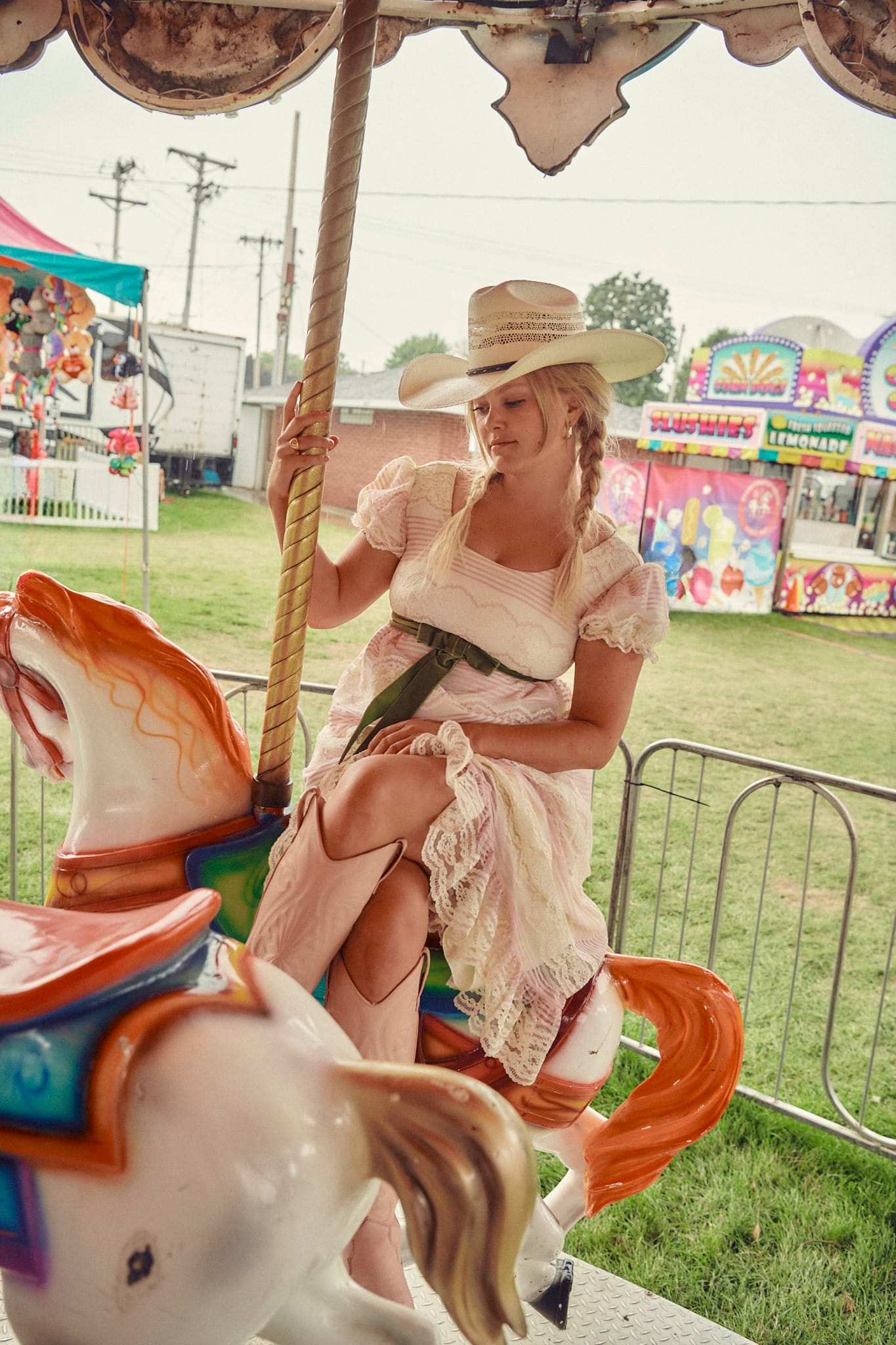A Century on
the Road
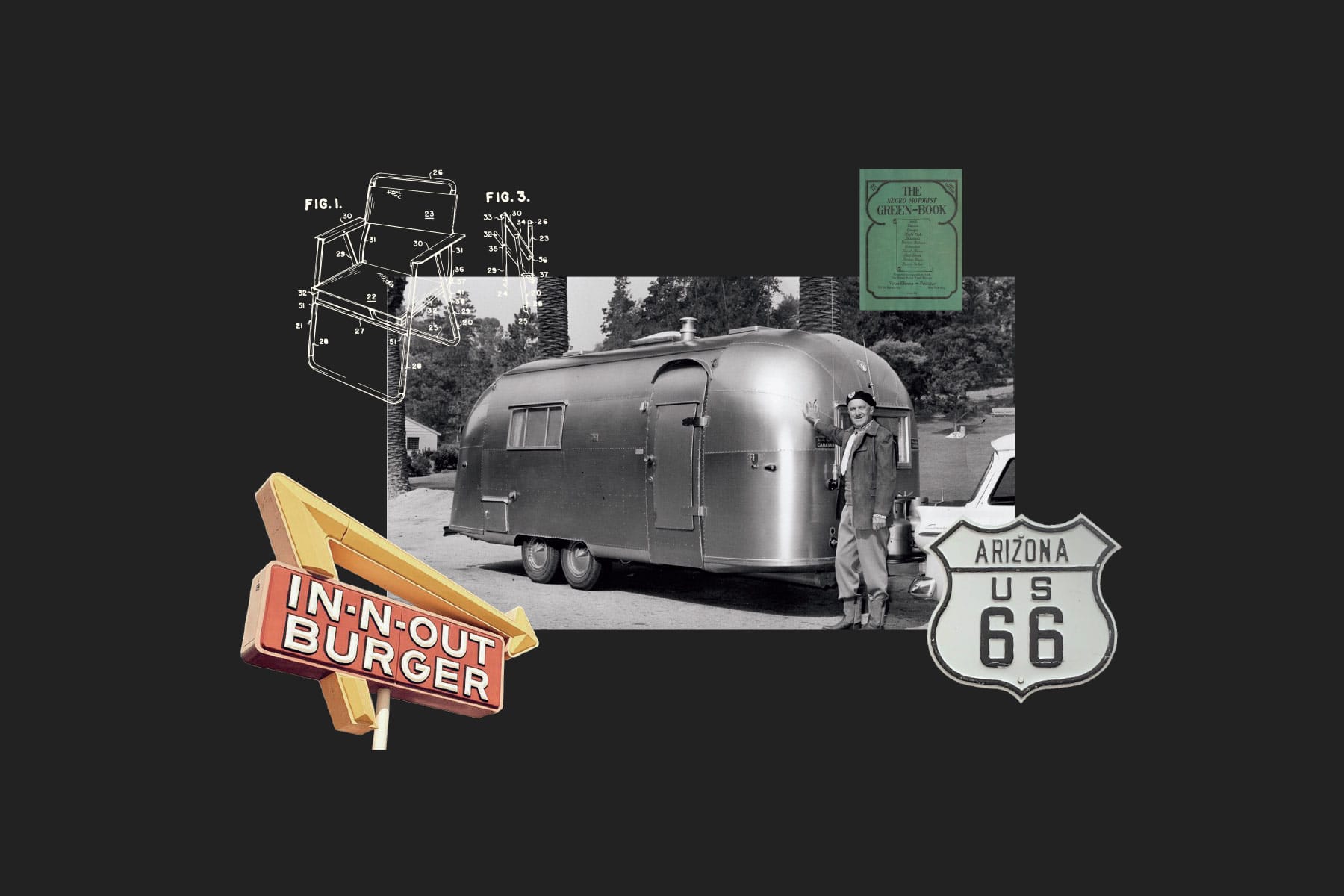
(clockwise from top) Schomburg Center for Research in Black Culture/New York Public Library; Airstream Heritage Center; Wikimedia Commons; Merry Jane; U.S. Patent and Trademark Office
Fifty milestones, big swings, and game-changing innovations, that shaped the last 100 years of cross-country travel.
FIRST AMERICAN ROAD ATLAS
Twenty-one years had passed since the inaugural cross-country road trip. Rudimentary motorhomes and camping trailers were already a cottage industry. But if you had to pinpoint when the open road took root in the American consciousness, you might look to April 15 of this year, when Chicago publisher Rand McNally dropped a two-color booklet of handdrawn maps called the Auto Chum, the first comprehensive look at the nation's roadways, back when most were still dirt and gravel.
MILESTONE MO-TEL OPENS
A San Luis Obispo developer dared to ask: What if hotels, but for motorcar drivers? The rest is portmanteau history.
U.S. Route Shield Debuts
A low-key icon of American design. Can you imagine a U.S. highway marked with a trapezoid?
The REO Speedwagon Camper
America couldn’t fight this motorcoach feeling anymore, so the REO Motor Car Company introduced a live-in version of its proto-pickup, with innovative features like a fold-out bed, gas stove and pressurized water system.
The Birth of Airstream
When magazine magnate Wally Byam fastened a tent platform to a Model T chassis, the result was ... still a long way from an Airstream you’d recognize. But he’d get there.
Meinicke's Campground Plan
Picture the classic national park campground: oneway loops encircled by campsite spurs, all branching off a main road. Simple, right? But before forester E.P. Meinicke invented it, car camping in the parks was a destructive free-for-all.
Opening of the Bixby Bridge
Its soaring, open-spandrel arch is more than just a sculptural wonder—it permitted road trips along the Pacific Coast Highway when the route through the Santa Lucias was often impassable. The Bixby Bridge opened up Big Sur, like a gateway to the promised land. And where would all those car commercials be without it?
The Negro Motorist Green Book
Compiled and published by Harlem postman Victor Hugo Green, the first edition of this Jim Crow era guide focused on New York City. But Green knew Black travelers all across the segregated country needed steering to hotels, restaurants, and other businesses where they’d be safe and treated with dignity. He marshaled readers and fellow Black mail carriers to help catalog Black-owned or welcoming white-owned businesses, and his Green Book, published annually until 1964, sold more than 15,000 copies a year at its peak.
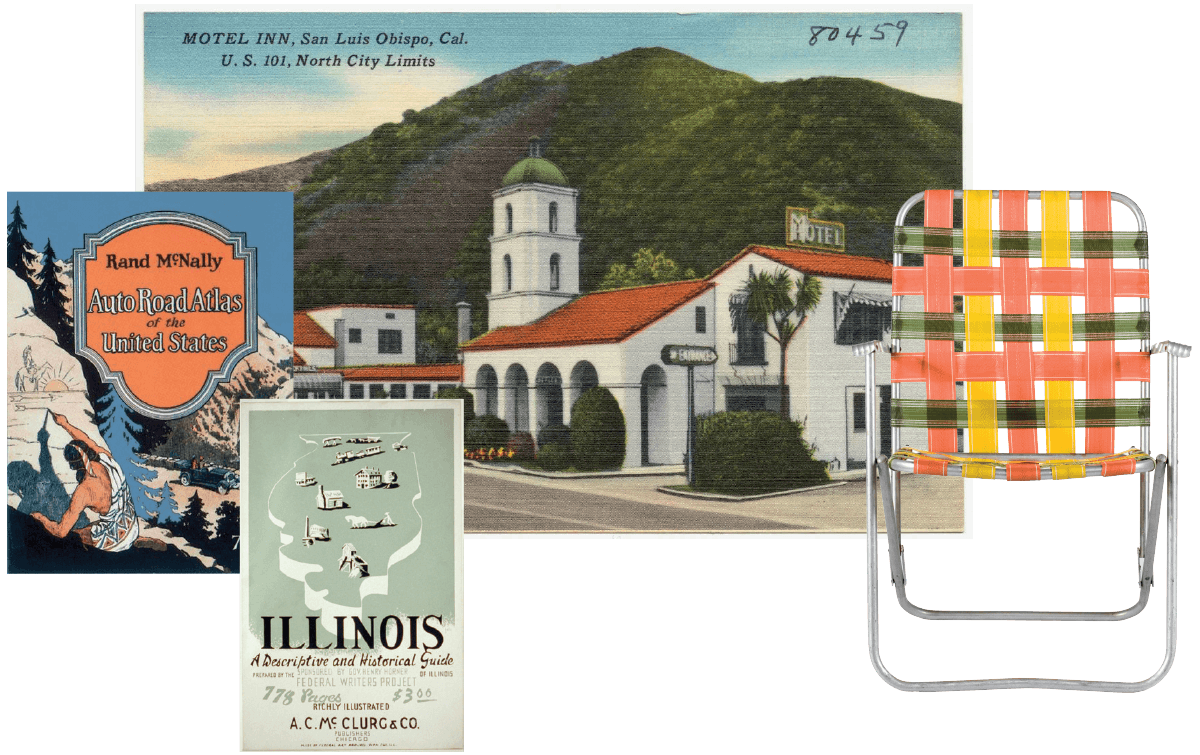
The WPA’s American Guide Series
In the Depression’s depths, FDR’s Federal Writers’ Project hired 6,000 out-of-work scribes (Saul Bellow, Zora Neale Hurston and Studs Terkel among them) to “describe America to Americans.” One result was these 100-plus volumes, delving into the history, geography and culture of cities, states and regions. The books aren’t without blind spots, but they’re eloquent time capsules of an evolving American mythos.
The Chitlin’ Circuit
In Indianapolis, a pair of club owners launched the Ferguson Brothers Booking Agency, nurturing a network of theaters, juke joints, and backwater dance halls that would host Black performers on marathon tours. The roots of rock, soul and R&B are in those venues—and are tied inextricably to the road.
THE JEEP CJ
Willys–Overland Motors released a civilian version of its WWII workhorse, turning American drivers on to four-wheel drive and a world of overlanding possibilities.
Bumper Stickers
Kansas City screenprinter Forest Gill had some war-surplus self-adhesive paper and a dream. Now you can tell everyone your other car is a Prius.
The Hollister “Riot”
A California farm town expected 1,500 for a motorcycle rally, but 4,000 showed up, drank the bars dry, and got a bit wild. When the press went overboard with stories of chaos and menace—including an infamous, possibly staged Life photo of a blotto biker—the public latched on to the outlaw mystique. Hollister inspired the Brando flick The Wild One, which inspired a genre, which drove a generational sales boom for motorcycles (and leather).
Aluminum Folding Lawn Chair
Lightweight and stowable, inventor Frederic Arnold’s collapsing chairs became instant car-camping classics, their synthetic webbing synonymous with middle-class ease.
FIRST IN-N-OUT BURGER
Drive-through fast-food franchises upended American road routines and diets, with Cali's now ubiquitous chain at the forefront. Animal-style fries were still decades off.
The Car Cup Holder
Hot on the heels of fast food, Burnard Byford of McGregor, Texas, filed a patent for a flip-down metal tray designed to hold two drinks and one pack of smokes.
VW-Westfalia Collab
Volkswagen hired an outfit called Westfalia-Werke to convert its still-new Type 2 buses into campers. Westys hit the U.S. five years later, and they were counterculture icons within a decade.
The Hille Ranger Pop-Up
The first modern pop-up had a crank-raised roof, snap-on canvas walls and the clean, curved lines of the cars that towed it. Only 40 or so are still out there.
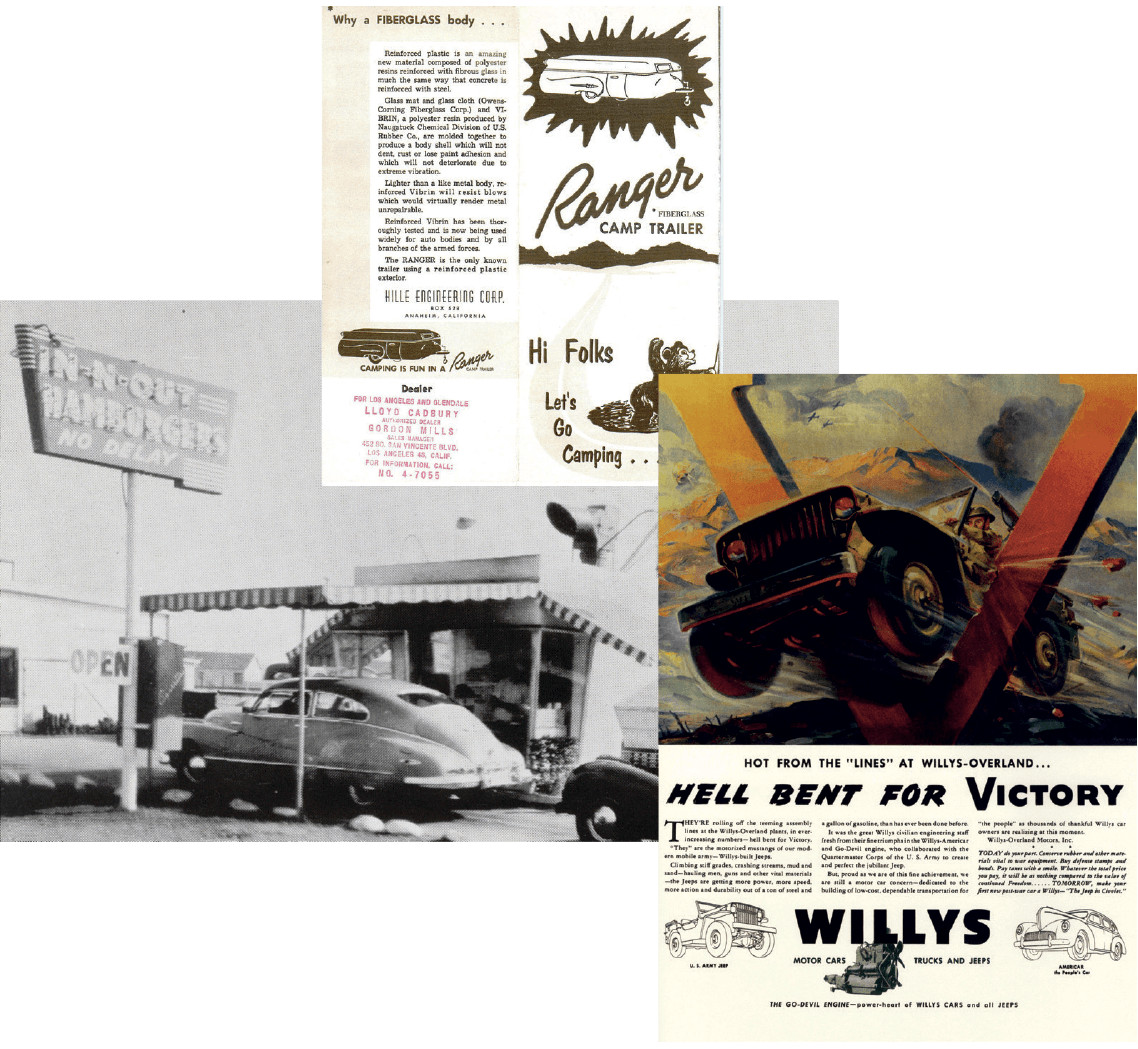
The Pop Tent
Ford Motors artist Bill Moss designed the first self-supporting dome tent, which could “pop into place like a children’s book illustration,” as The New York Times marveled.
Mission 66
After World War II, Americans ocked to national parks en masse, thanks to new roads and proliferating cars. Yellowstone crested a million visitors in 1948. Problem: the parks weren’t ready. Enter Mission 66, a decade-long effort to introduce expanded services, new traveler routes and sleeker architecture. The built legacy includes Clingmans Dome Observation Tower in Great Smoky, Yellowstone’s Canyon Village and basically any facility that feels like a Mad Men set. M66 also birthed signicant national seashores (Point Reyes, Cape Cod) and revived the National Register of Historic Places.
National Interstate and Defense Highways Act
Spurred by President Dwight Eisenhower, the original highwayman, Congress allotted $25 billion for a 41,000-mile freeway network that would span the country—and plow over many urban neighborhoods. “More than any single action by the government since the end of the war,” Eisenhower later re ected, “this one would change the face of America.”
JACK KEROUAC’s “On the Road”
Viking Press took a flyer on a stream-of-consciousness quasi-memoir about a series of mildly hedonistic postwar rambles. Lawyers insisted on pseudonyms, so Jack Kerouac became Sal Paradise: a generation’s wistful avatar, evangelist of the road as a liberating rite. Five million copies sold to date, innumerable coming-of-age trips inspired.
THE ORIGINS OF WINNEBAGO
Mortician turned salesman John K. Hanson wooed a California firm to open a travel trailer plant in his 3,000-person Iowa town. They named their first model off the line after the county and its river—Winnebago, another name for the Midwest’s Ho-Chunk Nation—and put a cool "flying W" design on the front. When Hanson took over the company a year later, he ran with both name and logo.
Waffle House Becomes a Franchise
As fast food took over America, classic roadside diners became an endangered species. But the ’60s saw a few regional hash houses morph into all-night interstate dynasties, none more beloved than the WaHo.
Frito Meets Lay
Charles Elmer Doolin started selling corn chips in 1932, the same year Herman Lay became a potato chip deliveryman. When their companies merged into a crunchy behemoth, packaged snacks became ubiquitous nationwide—great for road trips, meh for public health.
Baseball’s Last Barnstorm
A traveling exhibition team including Willie Mays and a 55-year-old Satchel Paige couldn’t fill bleachers in Little Rock, signaling an end to baseball’s tradition of barnstorming. With televised games and more and more major-league teams, players would no longer pile onto rickety buses in the off-season, crisscrossing the country to play small-town ball fields for extra scratch.
Thule's First Rack
In Sweden, a family-run metal shop known for fishing gear released a crossbar rack for toting skis atop a car, the foundation for decades of innovation on bike and board racks, kayak carriers, rooftop tents and more.
The Merry Pranksters Hit the Road
Oregon novelist Ken Kesey wondered: What if a road trip were a subversive art happening? He lled a 1939 skoolie with cans of DayGlo paint, 16-millimeter movie cameras, his post-Beat pals, and a whole lot of LSD. Tom Wolfe documented their voyage to New York in The Electric Kool-Aid Acid Test, and a counterculture was born.
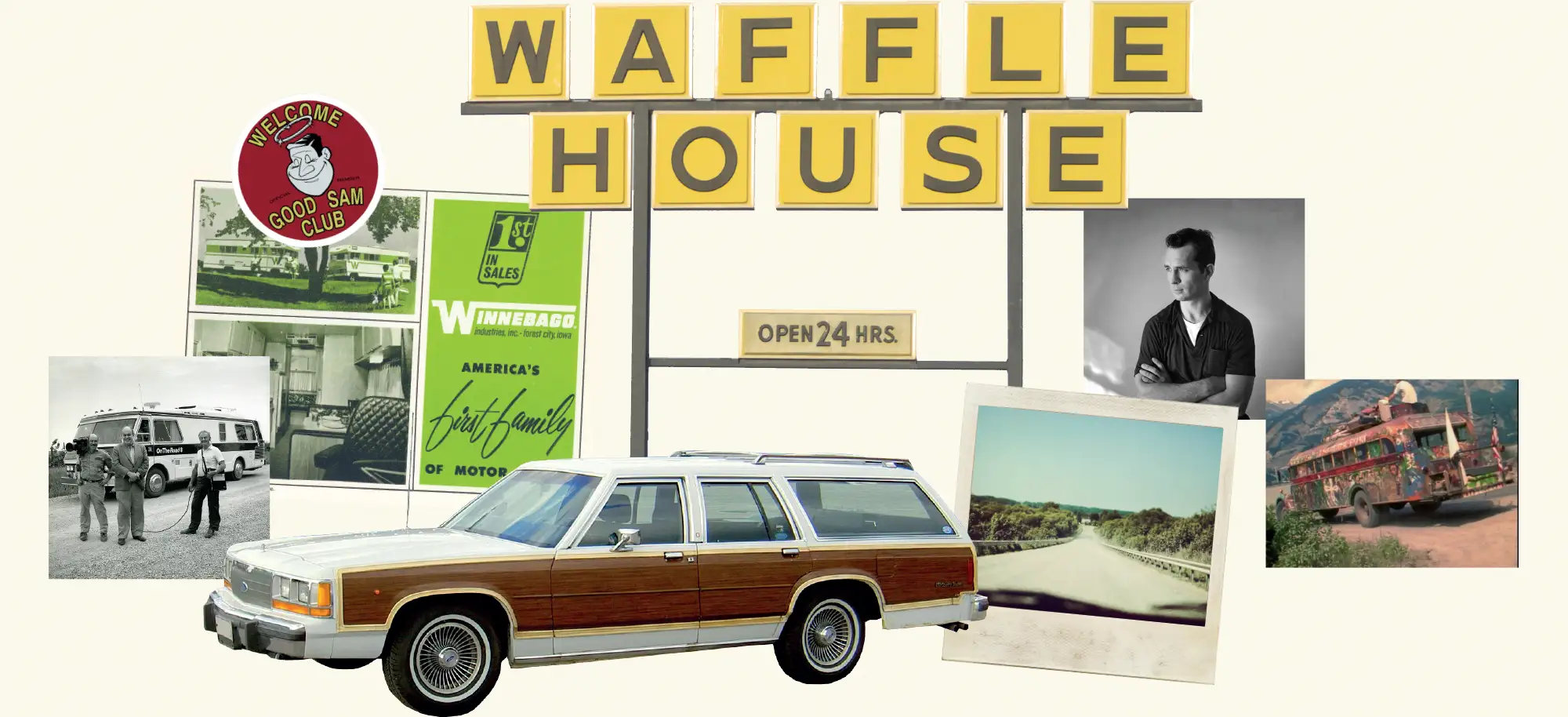
Unsafe at Any Speed
“For over half a century, the automobile has brought death, injury and the most inestimable sorrow and deprivation to millions of people.” The first sentence of Ralph Nader’s bombshell bestseller did not play. The book prompted a new regime of federal safety standards (hello, seat belts!), fundamentally changing the auto industry.
CHARLES KURALT DEBUTS "ON THE ROAD"
Tired of his beat, CBS foreign correspondent Kuralt convinced the brass to fund a freewheeling three-month road trip. It would last 13 years, yield 500 Evening News segments, cover a million miles, exhaust six motorhomes and birth a whole damn genre. There's no Bourdain without Kuralt.
Good Sam Club Founded
Want to ID yourself as a trustworthy RVer willing to offer (and worthy of receiving) roadside aid? Slap on this decal of a fellow with a halo, suggested California mag Trail-R-News. The loose alliance of sticker-bearers grew into an organization two million strong.
Ford LTD Country Squire
The quintessential faux-woodie family cruiser, the stuff of boomer and Xer reveries. Immortalized with a modified version in National Lampoon’s Vacation.
The Cannonball Run
No set route, rules or fanfare, just eight teams in a gonzo cross-country sprint, from NYC to Redondo Beach. A Ferrari Daytona won the inaugural, very illegal race in just under 36 hours. A Travco motorhome brought up the rear, while a loaner Cadillac was pulled over five times. Spawned a gem of a screwball movie franchise.
Keep America Beautiful’s “Crying Indian” PSA
A schmuck riding shotgun tosses a bag of fast-food trash at the feet of Iron Eyes Cody, an Italian American actor who dressed in buckskins and passed for Native throughout his weird career. The ad is cringe, but the tear rolling down Cody’s cheek galvanized an anti-littering movement.
THE POLAROID SX-70
Not the first Polaroid, but it’s the iconic folding model that most people envision when they hear the name (and the first one to nix the exposure’s peel-away chemical layer). Ansel Adams took one to Yosemite. Walker Evans brought one to Alabama. And a generation of parents toted them around on family vacations.
The Plastic Soda Bottle
A DuPont engineer patented a PET bottle for carbonated bevvies, destined to end up on more roadsides than Iron Eyes Cody could have walked in a lifetime.
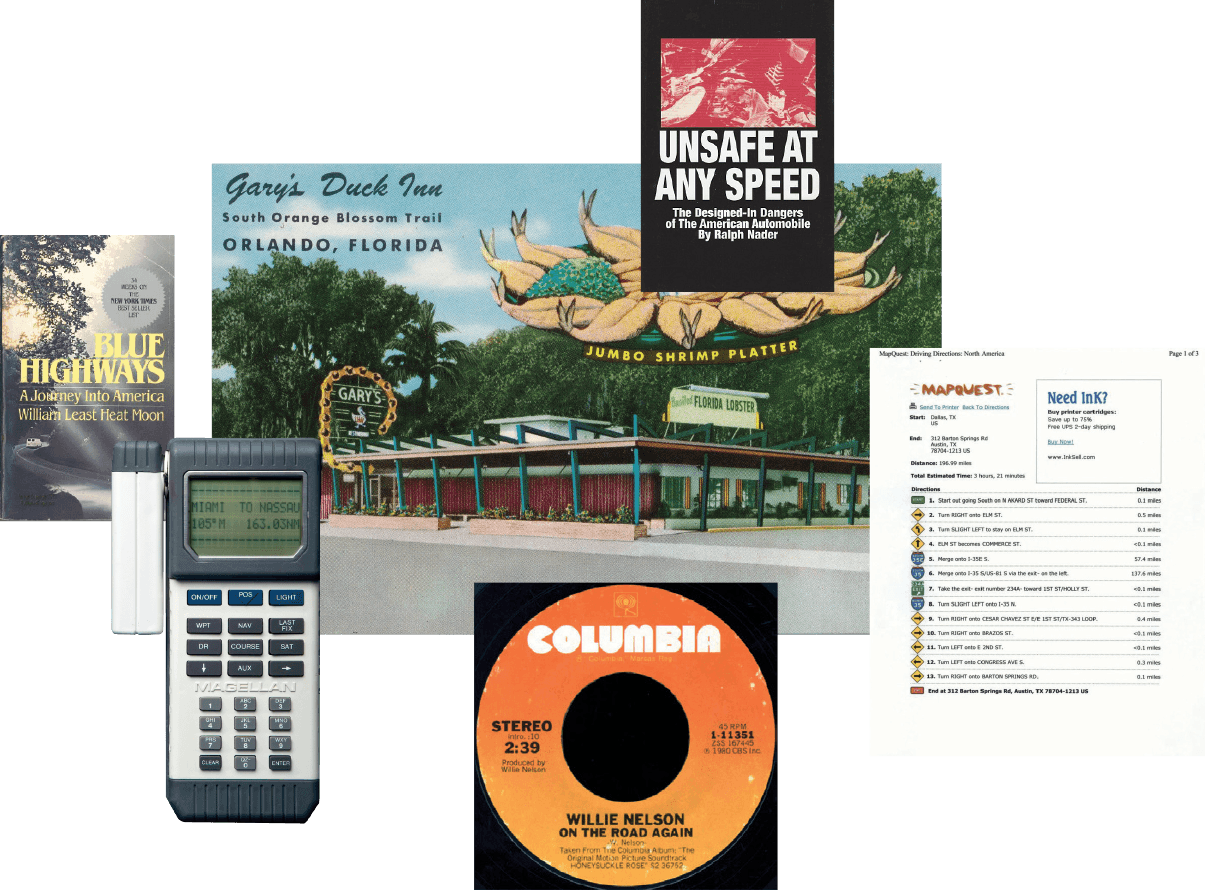
The Oil Crisis
When Mideast petrostates cut off the U.S. for its support of Israel, fallout included a 55-mile-per-hour national speed limit, fuel-ef ciency standards and a reality check for an RV industry used to designing the biggest rides they could build.
SOCIETY FOR COMMERCIAL ARCHAEOLOGY
In a museum conference room in Burlington, Vermont, a few dozen academics, hobbyists and artists gathered to float a radical idea: that diners and motor courts and muffler men were historic sites worth protecting. The group they formed led a paradigm shift in preservation, giving historical cred to roadside Americana.
William Least Heat-Moon’s “Blue Highways”
Early in this touchstone book, William Least Heat-Moon describes his project as a “circular trip over the back roads of the United States.” Still sounds like a plan. The poetic and spiritual possibilities of everyday road-tripping vibrate on each page.
Road Anthems
"(Get Your Kicks on) Route 66"
Songwriter Bobby Troup's breezy 1946 standard launched countless road trips. Nat King Cole gave it such swing, you can't not feel the sun caressing a convertible, the buoyancy of a carefree cruise out west.
"King of the Road"
Roger Miller's 1965 chart-topper remains the catchiest song of all time to reference trailers in its opening line, and it reintroduced the hobo as a country-music folk hero.
"On the Road Again"
Both joyful and wistful, it's a song about bus travel set to a train beat written on an airplane barf bag. If American travel has an anthem, this 1980 classic is it. Thanks, Willie
The Dodge Caravan
Memorably called “the love child of a station wagon and a van,” the original minivan began as a glimmer in Lee Iacocca’s eye. Credited with reviving Chrysler’s fortunes, the definitive family workhorse reminds us that looking cool is fine, but getting out there is what matters.
Magellan NAV 100
The first handheld consumer GPS looked like a big, clunky calculator, took four minutes to calculate latitude and longitude and didn’t display a map. Price tag: $3,000.
Mercedes-Benz Sprinter
It’s a luxury brand here, but Europeans have long known Mercedes for its light commercial rigs, and Sprinters made a splash there for their versatility and roomy cabins. Six years later, they landed stateside and became camper conversion dream fodder.
MapQuest
Getting from Point A to an unknown Point B once took skill and/or an especially descriptive pal. Then came the World Wide Web and printed-out pages of turn-by-turn directions. You could still get lost, but you’d have to work at it.
ZION CANYON CAR BAN
Utah's most visited national park became the first in the Lower 48 to make tourists hop a shuttle, energizing a car-free park movement that's now gaining serious steam.
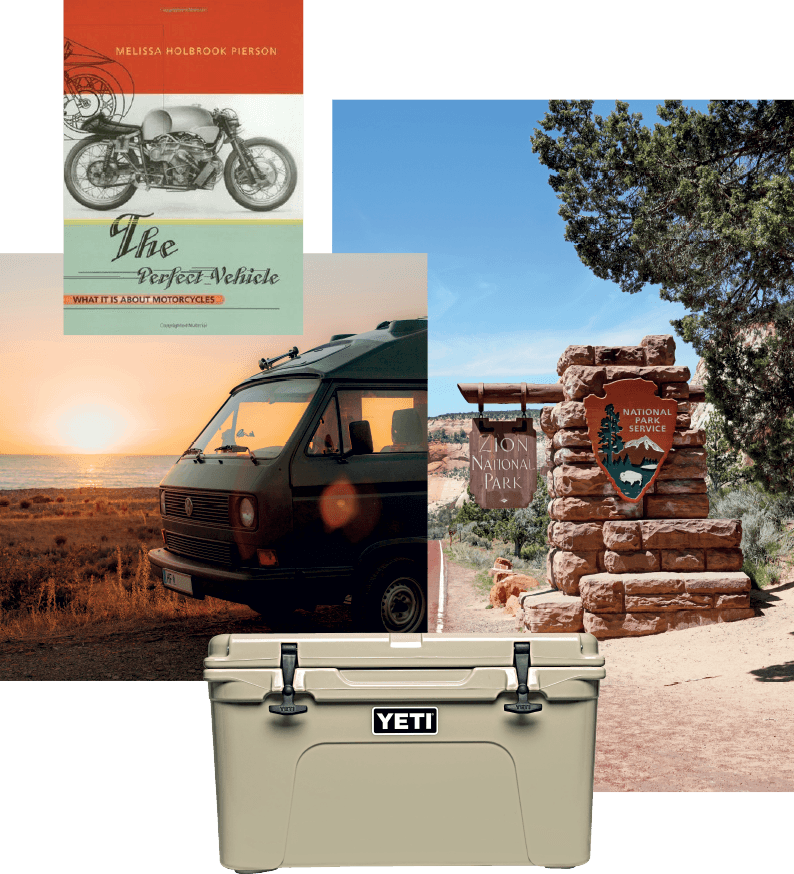
The YETI Cooler
A pair of brothers designed a rotomolded icebox in their dad’s garage, and we all realized we needed a cooler that can withstand a grizzly onslaught. The Austin startup fast became a lifestyle brand, and road-trippers can now go days without re-icing.
Dawn of the iPhone
Apple didn’t invent smartphones, but its streamlined version changed the game, turning your cell into a Swiss Army knife of navigation, booking apps and on-the-go entertainment. (And they used to come with free earbuds.)
First Overland Expo
Some 900 backcountry-loving gearheads gathered in Prescott, Arizona, to celebrate the vehiclecentered, long-distance off-road lifestyle. Today, 30,000 overlanders (and wannabes) descend on the western expo alone (there are three others).
#VANLIFE
A few months into full-time road life, Vanagon-dwelling erstwhile clothing designer Foster Huntington slapped #vanlife on an Instagram pic of a truck camper, launching a social-media fever dream of the mobile lifestyle
COVID-19
When the pandemic nixed travel abroad, Americans took to the road, with some remote-working types aiming to stay there. Visitation to marquee national parks shattered records in 2021, as did van and RV sales. The average age of a first-time RV buyer plummeted from 53 before the pandemic to 33 in 2022.
The Era of the EV Road Trip
Some 25 years after modern hybrids hit the U.S., the dream of cross-country travel in an electric vehicle is becoming a practical reality. To pick one of many developments: 30,000 new charging stations will come online, starting this year, via a collaboration of seven automakers. Shifting consumer desires, environmental imperatives, and massive federal investments will supercharge EV infrastructure in the years to come, opening a new chapter in the ongoing story of the American road.
